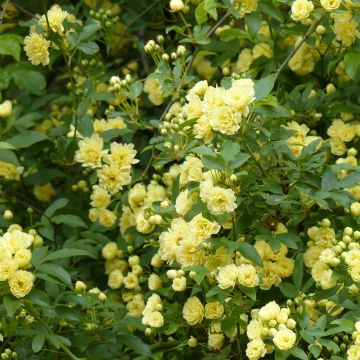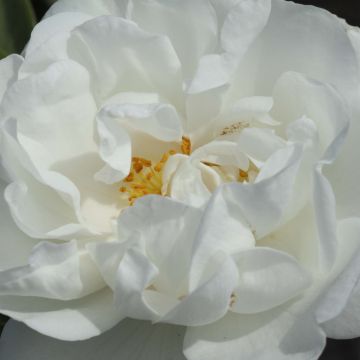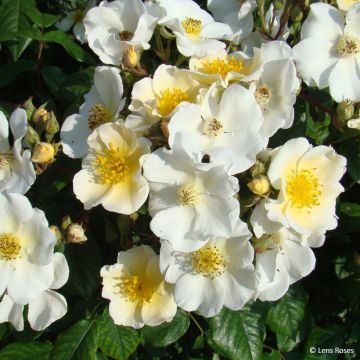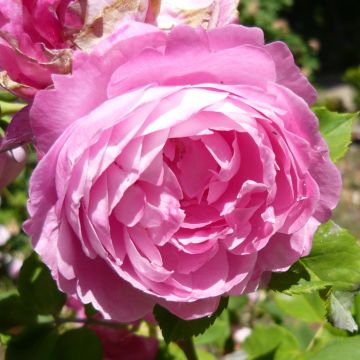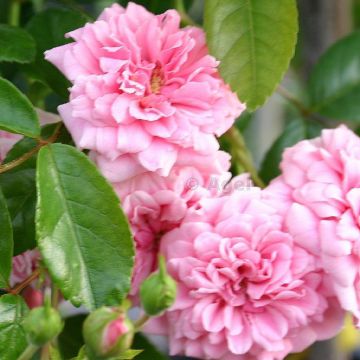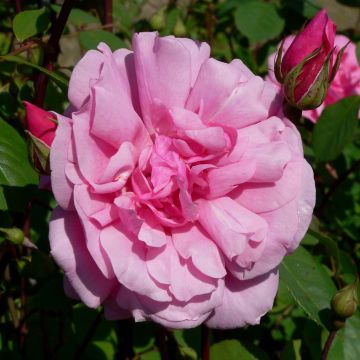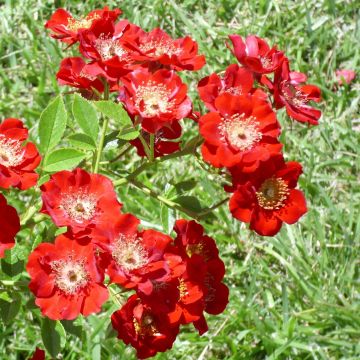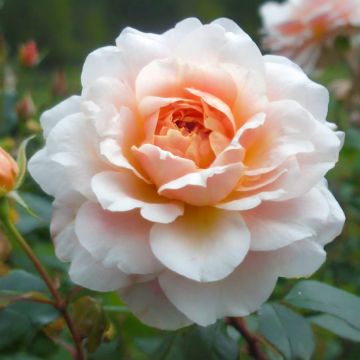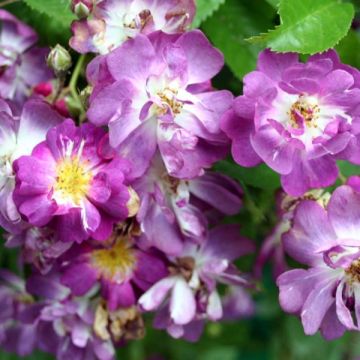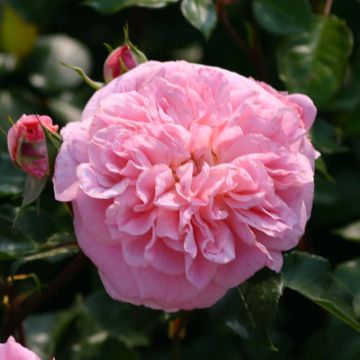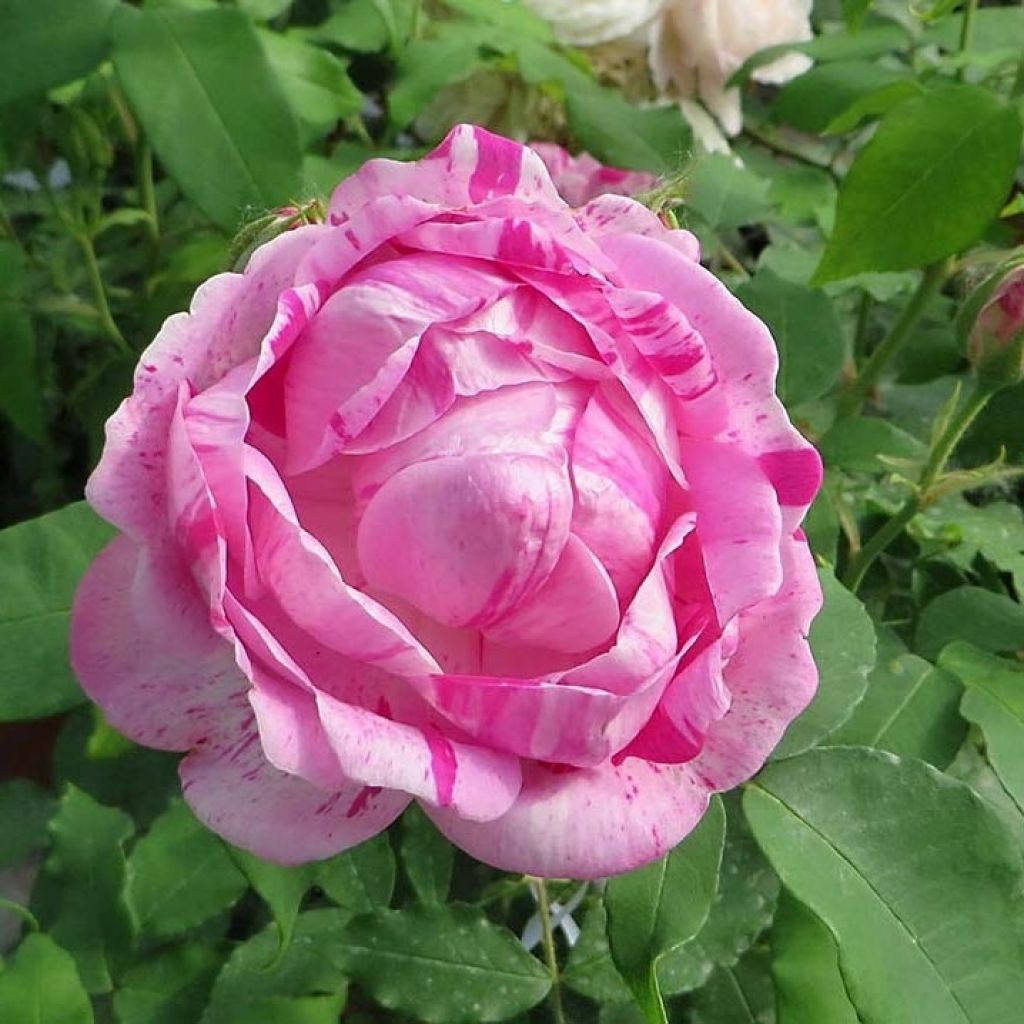

Rosa gallica Gros Provins Panaché
Rosa gallica Gros Provins Panaché
Rosa gallica Gros Provins Panaché
This plant carries a 24 months recovery warranty
More information
We guarantee the quality of our plants for a full growing cycle, and will replace at our expense any plant that fails to recover under normal climatic and planting conditions.
From €5.90 for pickup delivery and €6.90 for home delivery
Express home delivery from €8.90.
From €5.90 for pickup delivery and €6.90 for home delivery
Express home delivery from €8.90.
Delivery to Corse prohibited: UE law prohibits the import of this plant from mainland France to Corse as part of the fight against Xylella fastidiosa. Please accept our sincere apologies.
More information
Does this plant fit my garden?
Set up your Plantfit profile →
Description
Rosa Gros Provins Panaché was created in France by Fontaine in 1866. It is a unique variety derived from the robust gallica rose. This bush has a flexible habit, and is almost devoid of thorns. It bears disease-free light green foliage. It produces beautiful fragrant double flowers, variegated with white, cream, and different shades of pink. This flowering is rarely perpetual, but it is abundant and prolonged in June. All gallica roses are hardy, healthy, carefree, and full of charm.
Rosa Gros Provins Panaché is a descendant of R. gallica, the French rose, a plant celebrated by the Greek poet Anacreon in the 6th century BC. Native to central and southern Europe, the original gallica rose was probably brought to Gaul by the Roman conquest.
Rosa Gros Provins Panaché has a vigorous growth rate. It forms a bushy and flexible plant that reaches about 1.5m (5ft) in height and 1.2m (4ft) in width. Its stems are almost devoid of thorns. Its light green foliage is divided into small pointed leaflets, and is remarkably healthy. This variety generally flowers in June, abundantly and for several weeks. Depending on the climate and growing conditions, it sometimes reblooms at the end of summer, but in a more sporadic and unpredictable way. The roses measure 7cm (3in) in diameter and are in the form of double and globular cups. Grouped in numerous clusters, they bloom on branches that are at least one year old. Their colour evolves over the days, and they are all different: the petals are randomly striated with cream-white and pale-pink to almost white, on a background of pink to violet that darkens from purple to violet. At full bloom, the roses sometimes reveal a small cluster of stamens. The scent of the flowers is typical of an ancient rose. The deciduous foliage falls in late autumn.
Subsequently abandoned for repeat-flowering hybrid varieties, gallica roses are nevertheless sturdy plants steeped in history. They stand guard in old abandoned gardens, while many others have surrendered. Recognised as one of the best variegated roses, Rosa Gros Provins contributes to the exuberance of summer-flowering shrub borders and landscaped hedges, mixed with mock oranges, abelias, or lilacs. It is wonderful in perennial borders, alongside perennial geraniums, paniculate phlox, catmints, and lavender.
If you have enough space, English, Old, or Shrub Roses are magnificent when planted in groups of three. They will grow together to form what looks like a single opulent bush that will flower even more generously.
Plant habit
Flowering
Foliage
Botanical data
Rosa
gallica
Gros Provins Panaché
Rosaceae
Cultivar or hybrid
Other Traditional Roses
Planting and care
Prepare your soil to a depth of 40 cubic centimetres by crumbling the soil and adding a base amendment such as dried blood or dehydrated horn at the bottom of the planting hole. Position your young plant, and cover the graft point with 3cm (1in) of soil, fill in the hole, and water generously to remove any air pockets. During dry weather, it is important to water regularly for a few weeks to facilitate root development. Apply special rose fertiliser to stimulate flowering.
Roses are often stained or unsightly at the end of summer, but this will not hinder their development. These spots are a natural phenomenon and will not harm the rose.
Planting period
Intended location
Care
This item has not been reviewed yet - be the first to leave a review about it.
Haven't found what you were looking for?
Hardiness is the lowest winter temperature a plant can endure without suffering serious damage or even dying. However, hardiness is affected by location (a sheltered area, such as a patio), protection (winter cover) and soil type (hardiness is improved by well-drained soil).

Photo Sharing Terms & Conditions
In order to encourage gardeners to interact and share their experiences, Promesse de fleurs offers various media enabling content to be uploaded onto its Site - in particular via the ‘Photo sharing’ module.
The User agrees to refrain from:
- Posting any content that is illegal, prejudicial, insulting, racist, inciteful to hatred, revisionist, contrary to public decency, that infringes on privacy or on the privacy rights of third parties, in particular the publicity rights of persons and goods, intellectual property rights, or the right to privacy.
- Submitting content on behalf of a third party;
- Impersonate the identity of a third party and/or publish any personal information about a third party;
In general, the User undertakes to refrain from any unethical behaviour.
All Content (in particular text, comments, files, images, photos, videos, creative works, etc.), which may be subject to property or intellectual property rights, image or other private rights, shall remain the property of the User, subject to the limited rights granted by the terms of the licence granted by Promesse de fleurs as stated below. Users are at liberty to publish or not to publish such Content on the Site, notably via the ‘Photo Sharing’ facility, and accept that this Content shall be made public and freely accessible, notably on the Internet.
Users further acknowledge, undertake to have ,and guarantee that they hold all necessary rights and permissions to publish such material on the Site, in particular with regard to the legislation in force pertaining to any privacy, property, intellectual property, image, or contractual rights, or rights of any other nature. By publishing such Content on the Site, Users acknowledge accepting full liability as publishers of the Content within the meaning of the law, and grant Promesse de fleurs, free of charge, an inclusive, worldwide licence for the said Content for the entire duration of its publication, including all reproduction, representation, up/downloading, displaying, performing, transmission, and storage rights.
Users also grant permission for their name to be linked to the Content and accept that this link may not always be made available.
By engaging in posting material, Users consent to their Content becoming automatically accessible on the Internet, in particular on other sites and/or blogs and/or web pages of the Promesse de fleurs site, including in particular social pages and the Promesse de fleurs catalogue.
Users may secure the removal of entrusted content free of charge by issuing a simple request via our contact form.

































